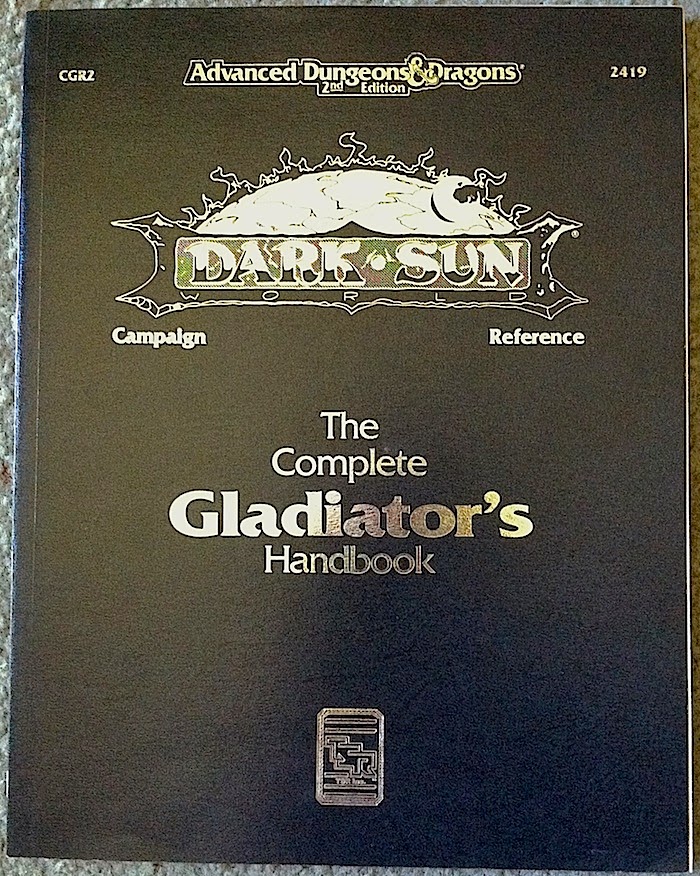Unlike some of the other "Complete" series from ADnD 2nd edition, this one is positively Dark Sun orientated - going as far as having the familiar burnt orange colour interior and familiar artwork associated with it. In a nut shell, it contains plentiful details about how to create gladiator class PCs, variations on this class, new rules related to gladiators and their combat, plus details of the arenas in each of the major city states of the Athasian Tablelands.
The first chapter of the book dedicates itself to character creation. If you're playing 4th edition DnD, then you need to note that the character kits are roughly character themes and will need none-zero work to translate in to modern DnD. These kits are generally reasonably well executed and range from the highly notable Jazst (travelling harlequins who get the crowd excited prior to the main events and have a stupidly large damage potential at low levels), the blind fighters (or more accurately: sense deprived fighters, but otherwise end up spending all their slots on this particular skill at low level); through to the Beast Trainer (which is precisely what you think it would be … and somewhat ranger-esque in operation if you ask me). The other kits tend toward a more "meh" reaction from me: professional gladiators, slave gladiators, arena champions and the like all kind of blend in to one for me. Might as well use the original gladiator class from Dark Sun for these instead to some extent.
Gladiator abilities and combat mechanics make up the next two chapters (respectively). There are a few nice ideas contained in these chapters that could be mined for further use. Some of the weapons are very unusual and highly Athas-orientated. The combat section does shine for a number of reasons though. Ranging from unarmed combat manoeuvres through to shield bashing, and grappling, through to limb-targeting, this section has everything! Even martial arts. This is great, as it provides gladiators with the opportunity to do things like knocking opponents unconscious deliberately.
The fourth chapter features and in-depth look at the arenas of the Tablelands. The one that did surprise me was Urik's. It is irregularly shaped and has deadly staves scattered around it. I thought Hamanu would have preferred something much more regular and open field. But oh well, perhaps his armies are what that is for. The chapter delves in to fan culture in more detail and allows the PCs to gain bonuses if the mobs like them in the arena. This is cute, but ultimately not that necessary unless one if running an entire gladiator campaign…. which just happens to be the topic of the fifth chapter. I wasn't particularly taken with this, as it contains all the obvious stuff (slave gladiators, the life and times of arena trials, fame / infamy, trading gladiators, and so on). This could readily be implemented by an imaginative GM / DM, but I suppose could be a good source of knowledge for relatively new GM's.
The book is rounded off by a smaller chapter on running tournaments. If playing in a particular city-state for an extended period, then this section will provide the detail for tournament days being held there and their own peculiarities.
Overall, the big positive thing about this book is the expanded combat / melee options presented. This really opens up an entirely new field for the PCs and is worth while from this point of view. Some of the other material is between meh to okay, to good, depending entirely if you're interested in the micro-culture of specific city-state arenas or are looking for something a bit more specialist than a regular gladiator character kit. Three stars out of five from me.



No comments:
Post a Comment